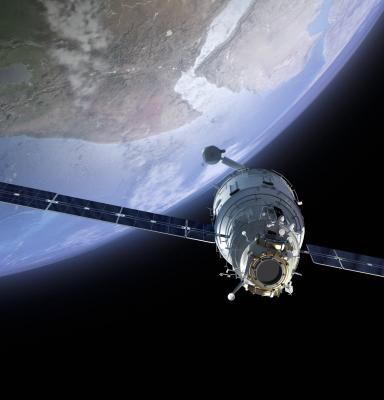
FSC GIS Portal
For FSC, it is key to ensure an objective and informed auditing process of certified areas, as far as possible. This is why FSC developed its GIS portal, which enables FSC forest management auditors around the globe to access relevant geospatial information, which they can easily combine with up-to-date satellite derived data.
The FSC GIS Portal is a geospatial web app for voluntary use by forest management auditors worldwide to support them in their daily work. The intention of the portal is to enable forest management auditors to prepare for audits more easily, and enable an objective selection of areas for inspection during an onsite audit.
This will make audits more effective, as it allows part of the process to be conducted off-site and with objective tools, while focusing the on-site part of the audit on elements that cannot be monitored and analysed automatically, such as social aspects, management systems or changes occurring under the canopy.
Which possibilities does the new tool give?
Combining the geospatial datasets with satellite imagery will allow auditors to analyze and identify where positive or negative changes have happened in the area within a given time period. The analysis can be done in combination with references to specific FSC Principles and Criteria, allowing forest management auditors to perform analysis of changes relevant to that criterion.
As an example, the auditor can choose criterion 6.7 (“The Organization shall protect or restore natural water courses, water bodies, riparian zones and their connectivity.”) and any changes happening in riparian zones of the selected area will be highlighted.
Analytics can be done fully automated or take place in a more advanced mode, where auditors combine available information with their own data sets.
What kinds of datasets are available?
The web app provides access to geo spatial datasets such as
- tree cover loss
- intact forest landscapes
- protected areas
- Indigenous and community lands
- water courses
- boundary data of certified forest areas, voluntarily provided by our certificate holders*
These data sets can be combined with satellite imagery.
*(If forest boundary data have not been provided by a certificate holder, the forest management auditor can either draw the outer boundary of the area under evaluation in the app or upload a boundary file temporarily)
Who can use the platform?
Currently the use of the FSC GIS Portal is restricted to certification bodies. However, it is envisioned that the use of the portal and its functionalities will be broadened as it develops. If you are an FSC auditor working with forest management evaluations and would like to request access to the platform, please contact us at maps@fsc.org
Using Earth observation to revolutionize FSC certification
Spatial analytics will allow FSC and the FSC certification bodies worldwide to monitor operations on the ground in a much more objective and transparent way, and pinpoint areas for improvement. Satellite analysis of our certified forest areas will help us to identify areas where forests are preserved. It will also indicate where certified forests are under pressure and require a more watchful eye.
Having a GIS-based analysis of certified forest areas is a further step towards implementation of risk-based auditing, where auditors could perform part of their evaluation remotely, and be informed in near real-time about whether logging or other activities are happening.
The FSC GIS Portal will be linked to an FSC Digital audit reporting tool in the near future. Analytics and data insights derived from the combination of these tools will ensure better quality of forest management evaluations, and enable FSC to aggregate and anonymize data across certificates and make it available for standard developers, researchers and decision makers to evaluate and further develop the FSC system.
Similarly, it is the intention that GIS based tools should be developed to help smallholders and community forest areas prepare for FSC certification and audits in a cost-effective and user-friendly way. For many smallholders around the world, preparing for an FSC certification is expensive and obtaining a forest inventory in itself can be a challenge. Part of FSC’s long-term vision is to explore the potential of GIS and Earth Observation to address these challenges. The aim is to use GIS technology - as much as possible - to increase accessibility to FSC certification for many more forest owners worldwide.
Ensuring an overview of FSC certified forest areas
One of the ambitions of the FSC digitalization process is to have as complete a GIS map of all certified forest areas around the globe as possible. To enable this, FSC released basic GIS-based tools in 2019. Using the tool, FSC certificate holders can voluntarily provide FSC with a file showing the boundaries of their FSC certified forest area.
Within months of its release, more than 40 per cent of FSC certified areas were added to the map. Particularly for smallholders and community forest owners, contributing shape files for the map can be a challenging task. FSC is working to find solutions to this challenge and support the creation and upload of files in the future. In the meantime, all forest owners that have shape files available, should share them with FSC to become represented on the map and more easily enable their auditors to use our other GIS tools on the FSC GIS Portal.
To contribute your shape file, read more here.

Highlights
The implementation of GIS tools is a core focus area for FSC. In 2019, FSC released its first set of GIS-based maps. Stakeholders are now able to digitally identify FSC-certified forest areas on top of a satellite imagery base map. Only certified areas voluntarily provided by forest managers are presented on the map at this time.
In 2020 and 2021, FSC will focus most of its GIS capacity on launching and further developing a GIS verification platform. The intention of the platform is to enable satellite monitoring and analysis of certified forest areas according to the selected FSC requirements from FSC Principles and Criteria.

Podcasts
Forest for the future podcast series. Episode 14: Auditing from the sky. Launch of FSC GIS Portal. Interview Andrés Felipe Ramirez
28.01.2020. The portal enables auditors to dive into maps of forest relevant geospatial information such as areas of high conservation value, forests, protected areas, community or Indigenous Peoples’ lands and combine it with up-to-date satellite derived data. The auditor can use the information to identify and highlight, where things have changed for a given period of time and link those findings to the FSC Principles and Criteria.
Forest for the future podcast series. Episode 2: How is GIS innovating FSC audits? Interviews with Joanna Nowakowska and Andrés Felipe Ramírez
07.05.2020. In this episode we will be looking into how FSC is utilizing GIS tools to innovate the way audits are being informed and even performed. We will be diving into how GIS based tools can help FSC provide digital solutions to the new challenges we are facing due to the COVID-19 pandemic. Because how does a certification system like FSC function, if auditors can’t travel and get on the ground? GIS based verification may be part of the answer.